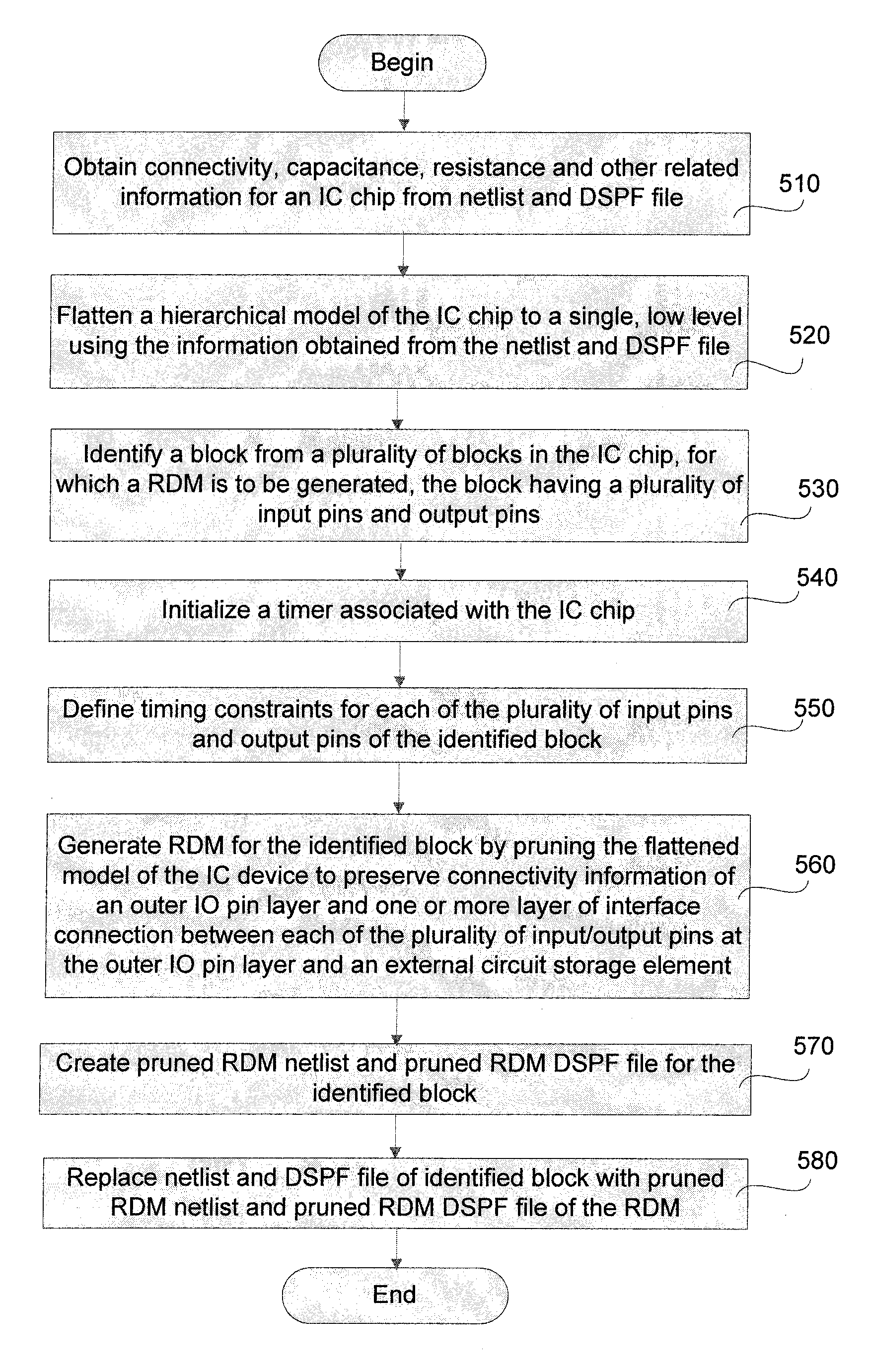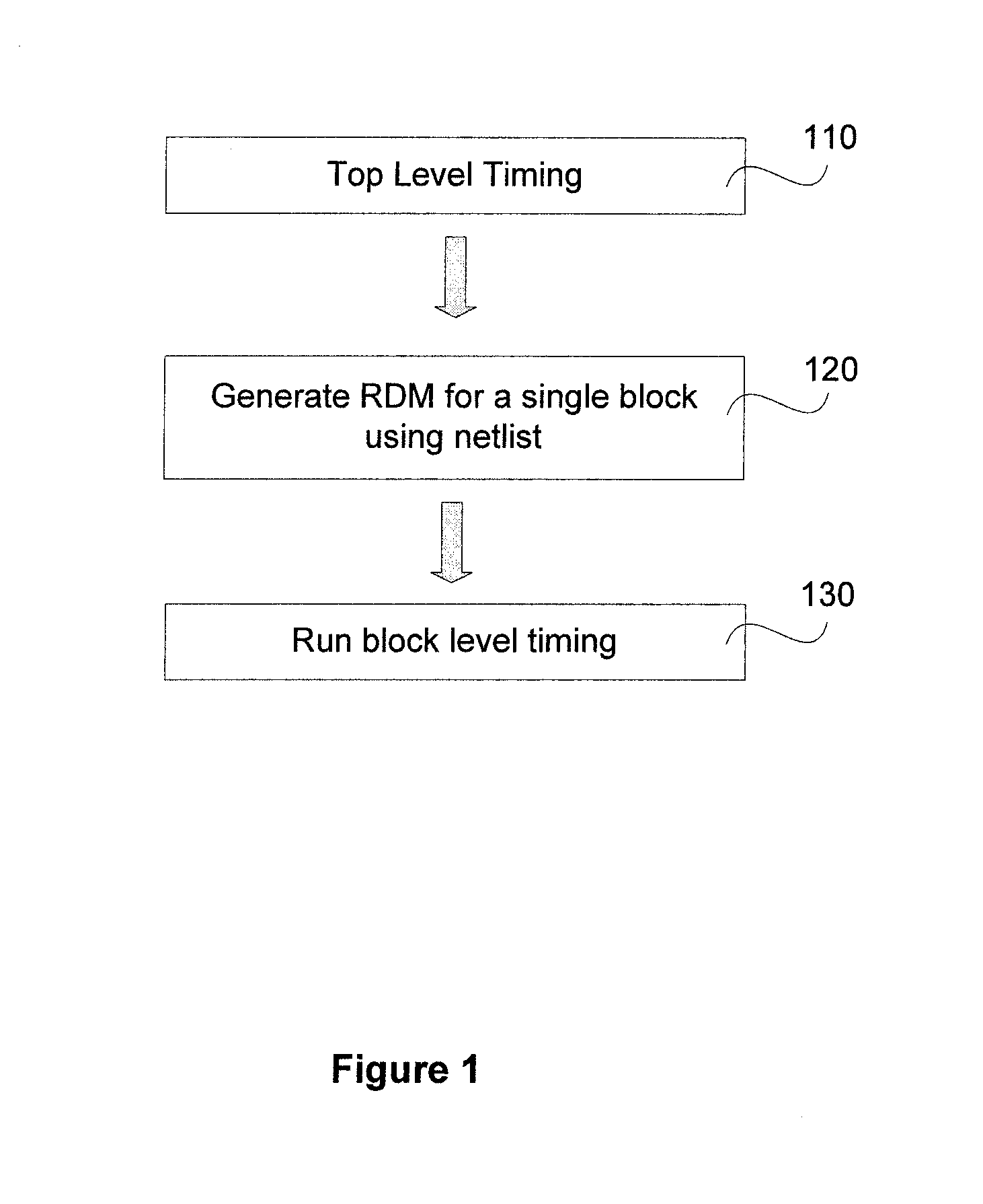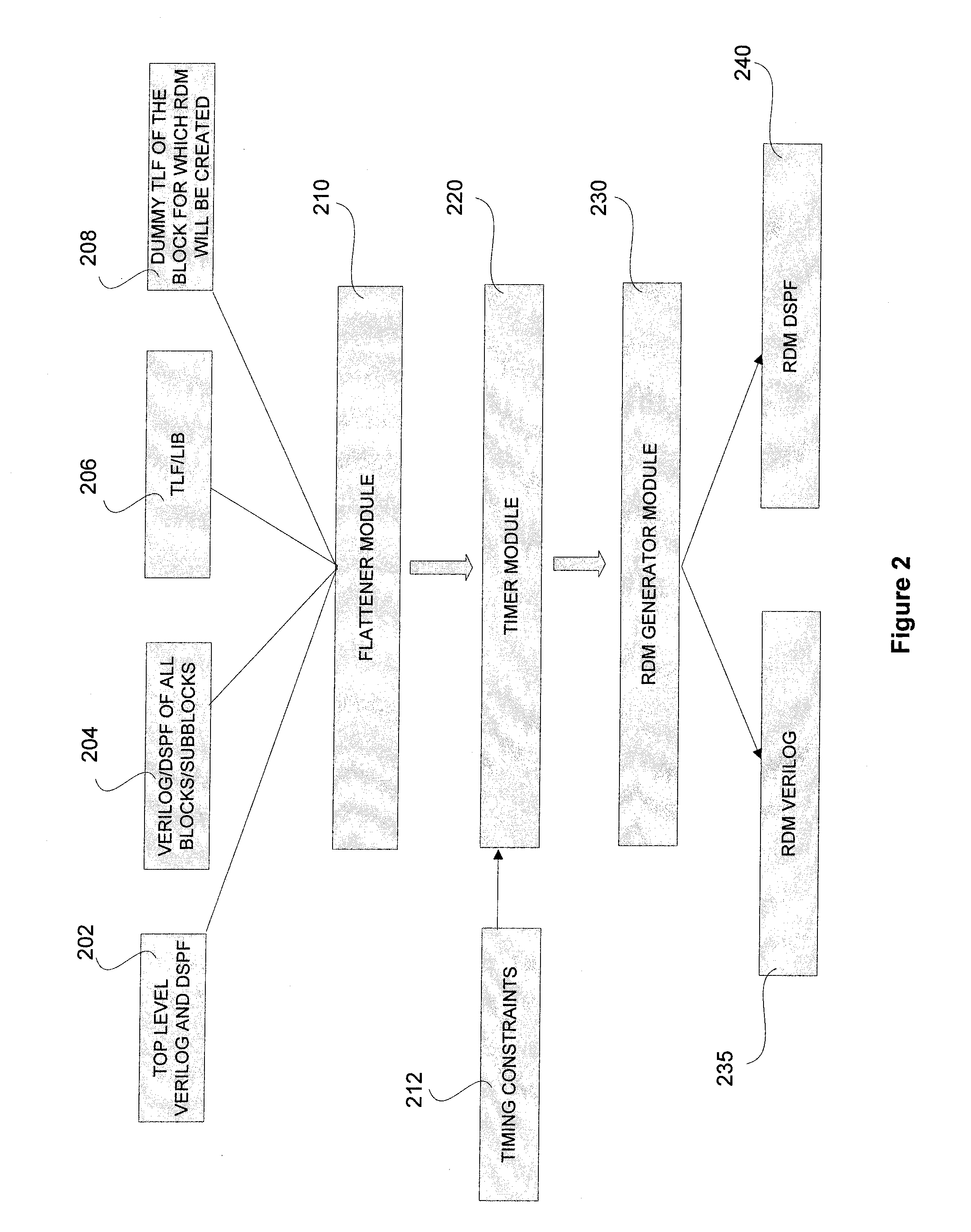Reverse donut model
a reverse donut model and model technology, applied in the field of performance analysis tools, can solve the problems of inability to generate accurate timing in lower level blocks, difficulty in providing timing constraints, and mismatch between timing runs at the top level and at the flat level, so as to achieve the effect of effectively generating a reverse donut model and preserve essential performance characteristics
- Summary
- Abstract
- Description
- Claims
- Application Information
AI Technical Summary
Benefits of technology
Problems solved by technology
Method used
Image
Examples
Embodiment Construction
[0019]The present invention provides a pruning algorithm for implementation in a simulation tool to generate a reverse donut model (RDM) of a block within an integrated circuit (IC) design. The generated RDM is used in place of the block in the IC during timing analysis using the simulation tool. The RDM provides for a faster and more accurate analysis of the block within the IC than traditional algorithms and tools. In one embodiment of the invention, the approximate runtime for analyzing the IC using the RDM model is about 3 times faster than the time taken by the traditional method using the fully flattened model. The pruning algorithm includes logic to obtain connectivity and other parasitic data related information, such as capacitance, resistance, inductance etc. for a plurality of blocks in the IC from a netlist and a Detailed Standard Parasitic Format (DSPF) file. A hierarchical model of the IC is flattened to a single level flat model using the information from the netlist ...
PUM
 Login to View More
Login to View More Abstract
Description
Claims
Application Information
 Login to View More
Login to View More - R&D
- Intellectual Property
- Life Sciences
- Materials
- Tech Scout
- Unparalleled Data Quality
- Higher Quality Content
- 60% Fewer Hallucinations
Browse by: Latest US Patents, China's latest patents, Technical Efficacy Thesaurus, Application Domain, Technology Topic, Popular Technical Reports.
© 2025 PatSnap. All rights reserved.Legal|Privacy policy|Modern Slavery Act Transparency Statement|Sitemap|About US| Contact US: help@patsnap.com



